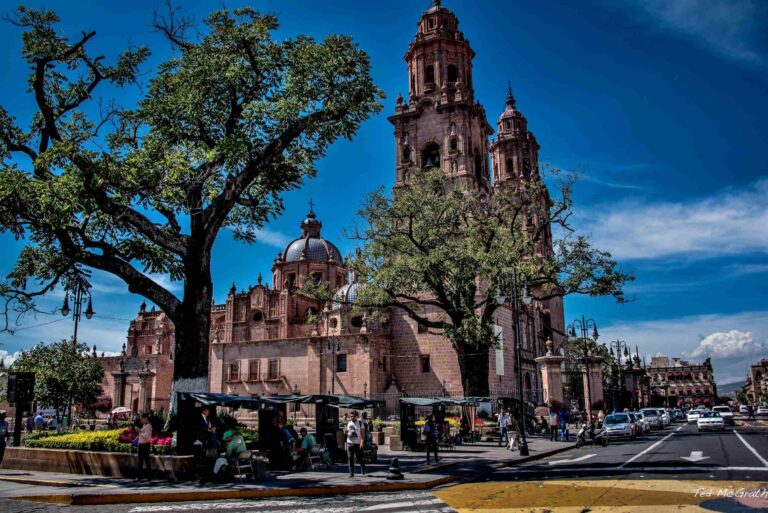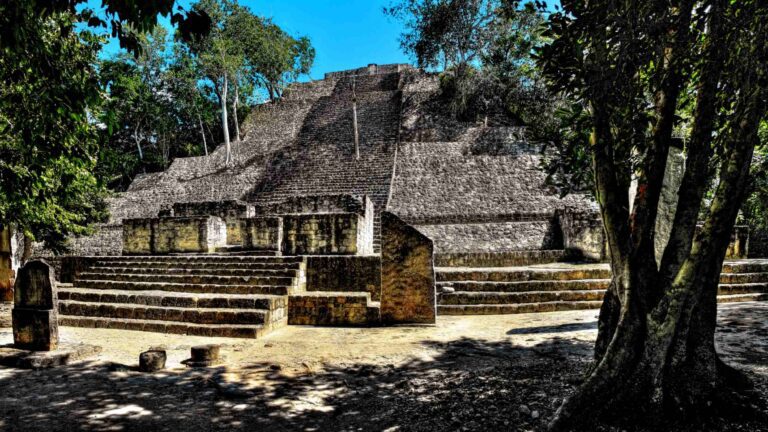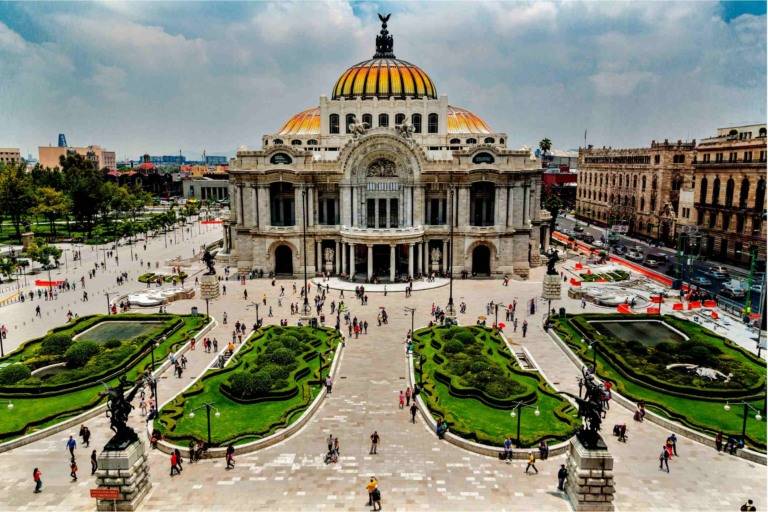
Morelia is in Michoacan, Mexico. The city is between the Chiquito and Grande rivers on the Central Plateau. It became a UNESCO World Heritage Site in 1991.

The ancient Maya city of Calakmul and the surrounding protected tropical forests are located in the state of Campeche, Mexico. Calakmul ruins are renowned for their historical significance as a major Maya city and their ecological importance as a protected forest area. Calakmul was one of the most powerful and significant ancient Maya cities during the Classic period. It was a major center of political, economic, and religious activity within the Maya civilization. The city is known for its impressive architectural structures, including temples, pyramids, palaces, and ball courts. One of the most notable features of Calakmul is its monumental architecture, particularly Structure II, which is one of the tallest pyramids in the Maya world. The Calakmul Biosphere Reserve, which surrounds the ancient city, is one of the largest protected tropical forest areas in Mexico. The reserve is home to diverse flora and fauna, including various species of mammals, birds, reptiles, and plants. It’s considered a critical habitat for biodiversity in the region and plays a crucial role in maintaining the health of the ecosystem.

Chichen Itza is a renowned archaeological site located on the Yucatan Peninsula of Mexico. It represents one of the most iconic and well-preserved pre-Hispanic cities of the Maya civilization, featuring a blend of Maya and Toltec styles. One of its most iconic structures is El Castillo, also known as the Pyramid of Kukulkan. This pyramid showcases advanced astronomical and mathematical knowledge, with its design aligning with the equinoxes to create a serpent-like shadow descending the pyramid’s steps. The city is home to the Sacred Cenote, a natural sinkhole believed to have held religious significance. It was used for ceremonial purposes, including offerings of valuable objects, jewelry, and even human sacrifices. Explorations of the cenote have revealed a trove of archaeological artifacts. Chichen Itza’s observatory, known as the Caracol, demonstrates the Maya’s advanced understanding of astronomy. The city’s architecture also incorporates precise mathematical and calendrical calculations, evident in the layout of buildings and structures. Here’s a summary of Chichen Itza’s historical and cultural significance:

Monarch Butterfly Biosphere Reserve lies within rugged forested mountains about 100 km northwest of Mexico City, a UNESCO World Heritage Site from 2008 onward for monarch butterfly migration.

Mexico boasts an impressive collection of UNESCO World Heritage Sites, totaling 35 in number, each contributing to the country's rich cultural and natural diversity. These sites encompass a variety of categories, with 27 classified as cultural sites, 6 as natural sites, and 2 as mixed sites, showcasing both natural and cultural significance. Remarkably, Mexico stands alone in its ownership of these sites without sharing their UNESCO recognition with any other country.
Within this extensive list, several UNESCO World Heritage Sites in Mexico hold particular significance, notably the pre-Columbian treasures nestled on the Yucatan Peninsula. These ancient cities, many of which are conveniently located just an hour's drive from modern cities, offer an exceptional glimpse into the past. However, some, hidden amidst dense tropical jungles, present a challenge to reach, adding to their mystique. Mexican historic sites, featuring vibrant pyramids and intricately crafted stone structures, add an extra layer of allure, revealing the depth of cultural heritage.





